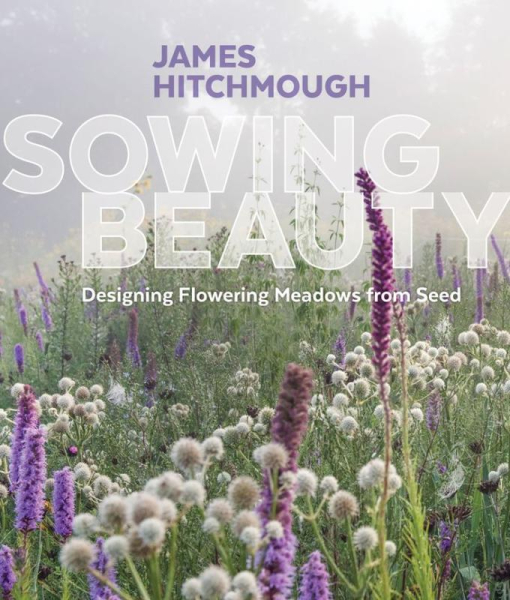
This book is somewhat off the beaten alpine path but it does break welcome new ground in a growing niche area of gardening, the flowering meadow. It presents a method for using a seed mix as the base for a natural long-lasting plant community.
The author, James Hitchmough, is the recently retired head of the Department of Landscape Architecture at Sheffield University in the UK. He is an expert in the area of the design, ecology, and management of herbaceous vegetation.
Sites for a possible meadow can include urban parkland, hillside slopes, grassland areas, boggy meadows, woodland understory, rain-shadow steppes, large residential and commercial office sites, and places with seasonal drought.
Once a site has been selected, the actual design process begins. Plant selection is based on conditions such as site size, rainfall, sun, shade, soil productivity, plant size, and the possibilities for low future maintenance. The initial list of species is checked to see if seed can be gotten and if plants can be realistically established from seed sown in situ. Inappropriate species are rejected.
Some commercially available seed mixes may prove useful, even though many of them contain grasses, which tend to be very competitive. Designing one’s own planting mix may be more successful even though it involves careful calculation of what percentage of each species should be included, again based on growth rate, mature plant size, moisture needs, flowering season, and esthetic impact.
After the seed has been acquired, the site is prepared and existing vegetation removed. In some cases surface mulches are used to inhibit the weed seed bank. Some seed may need to have pretreatments, such as scarification, prechilling, smoke treatment, and soaking in water, depending on the species.
Actual sowing takes place, often enhanced by the use of bulking agents, like sand or moist sawdust. The majority of many species are best sown between mid-autumn and early winter.
Establishment of the meadow species from seed is very crucial in the first year. Much depends on frequency of irrigation, again taking into consideration the slope of the site, time of day, depth of the sowing mulch, and clay content of the soil. Other risks to the newly emerging seedlings are slug grazing and weed germination. Applying nutrients to the site can give a boost in the first year of growth.
There are many different long-term management patterns for the meadow after the first year. All of these patterns are based on having a vision (or not) of what the vegetation will be in the future. In many sites, the management is simply letting the meadow become what it wants to become. This approach requires few resources, especially in rural landscapes and in habitat restoration areas. In most sites, the acceptable density of weed invasion that is tolerable and the acceptable reproduction rates of the sown plants are the key factors in growth management. The case studies in the second part of the book give many more specific details of the design process and the evolving management practices.
The book is divided into two parts:
Part 1 (from Table of contents):
Introduction
Looking to nature for inspiration and design wisdom
Designing naturalistic herbaceous plant communities
Seed mix design, implementation, and initial establishment
Establishment and management
Part 2: 11 case studies of sown prairies, meadows, and steppe.
Each case study contains the following:
Plant communities
Seed sources
Client and conditions
Area of project
Timescale
History and design approach
What worked and what didn’t
The book is highly illustrated, often including pictures of the same site at various times in the same growing year, and some showing results in the following years after establishment.
There are many tables of plant species, based on their moisture needs, design potential for various soil types, climactic exposure, flower impact, flowering season, plant height, time to sow, possible germination results, probable weed invasion, and long-term care management.
There is a full index, including all species mentioned in the text or tables or illustrations.
While at first glance this may seem like a technical manual, it is very readable and does much to define and clarify various “meadow” habitats and types, and the plants they can support (or not), the best seed to plant and when, whether a carrier or bulking agent is needed to aid sowing, irrigation frequencies, and the management of the meadow area in the future.
Ray Deutsch, Western Chapter, gardens in American Canyon, California. His main interests are divided between alpine plants and California native plants. He is a retired programmer/librarian and reads a lot of mysteries.
Portland, Oregon: Timber Press, c2017. 364 pp. $45.00 list price
